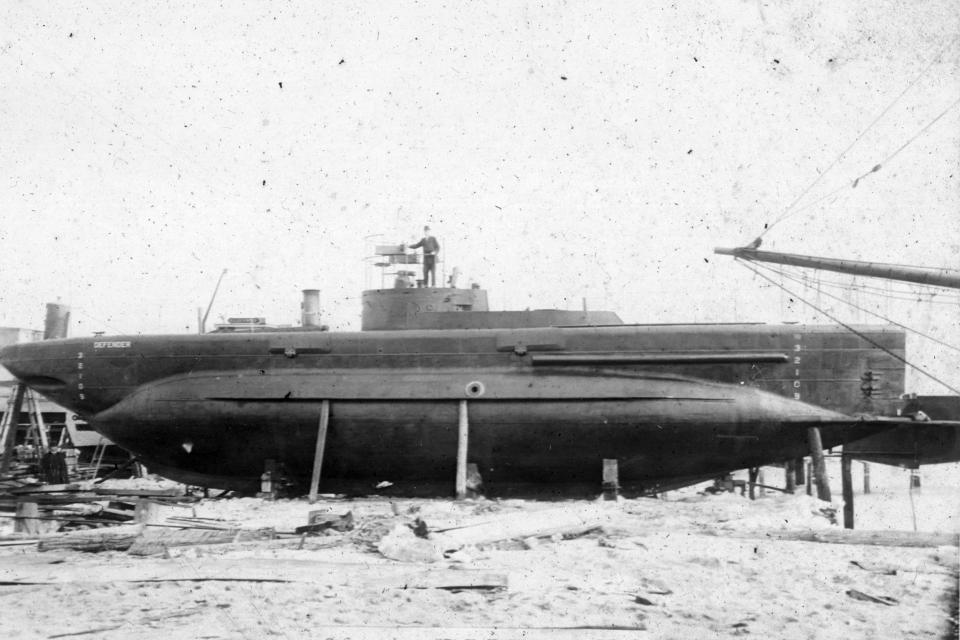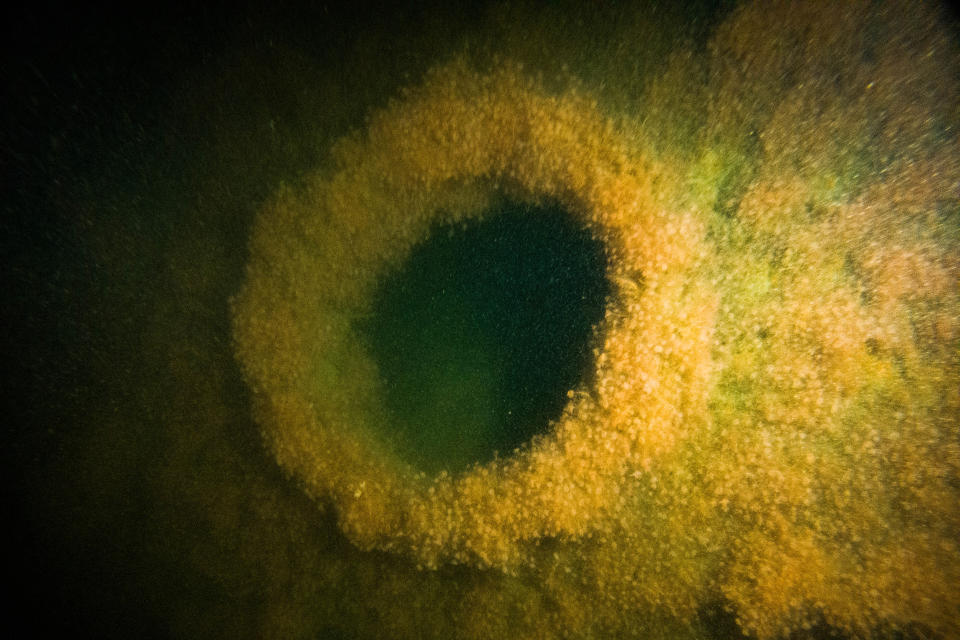Commercial divers find wreckage of early 1900s submarine off Long Island Sound

- Oops!Something went wrong.Please try again later.
- Oops!Something went wrong.Please try again later.
The Defender, an early submarine rejected by the U.S. Navy, wasn't exactly an A-list object of desire for global shipwreck hunters, but it was for Richard Simon.
Simon, 35, grew up diving along the Long Island, New York, coast, hearing tales of the oddball vessel from the early 1900s, and wondering about its whereabouts. On Sunday, Simon led a volunteer team of divers that put hands on the sunken submarine off Long Island Sound, he said.
It may have been the Defender's first human contact since it was abandoned by the Army Corps of Engineers 77 years ago, according to a statement from Simon's firm, Shoreline Diving Services of Coventry, Connecticut.
“We discovered something hiding in plain sight,” he said.

While acknowledging it was no Titanic, Simon noted the vessel's role as a step in the evolution of American submarines in the decades before they would become crucial to some U.S. military victories on the high seas.
Its maker was Simon Lake, the grandson of one of the founders of Atlantic City, and a fan of Jules Verne and his epic, "Twenty Thousand Leagues Under The Sea," according to the Submarine Force Library and Museum Association.
The Defender was described by the U.S. Navy as "experimental." It was overshadowed by the USS Holland, John Philip Holland’s vessel that is widely said to be the U.S. Navy’s first modern submarine.
After the Defender's launch, Lake registered new inventions, such as the periscope and foils used to keep submarines level as they descended and ascended, Simon said.
Many of Lake's New Jersey-built submarines from the early 1900s were intended for and rejected by the U.S. Navy. It wasn't until 1911 that the U.S. Navy purchased one of his creations, according to the Naval History and Heritage Command.
As Holland fared better with the military, Lake retrofitted his rejects for tasks such as salvage operations, which he did with the Defender, according to the command.
The Defender, all 92 feet of it, was ultimately scuttled along Long Island Sound in 1946, with experts speculating its last resting place was off Old Saybrook, Connecticut, according to background provided by Shoreline Diving Services.

It was in that general area, more than 160 feet below the surface, where Simon, on the deck of his 38-foot work vessel, kept watch as divers Steve Abbate and Joe Mazraani saw and felt the distinctive and quirky lines of the Defender on Sunday, he said.
It wasn't easy. Visibility along the sedentary bottom was about 3 feet, he said, and tidal flow gave the team a 45-minute window to find it or forget it for the day. It would be the team's second dive to find the vessel.
Sunday's victory inspired Simon to reach out to descendants of Lake, whom he had spoken with before.
"From what I gathered from family members, he had grand ideas and was a man ahead of his time," he said.
Simon is not yet ready to give the exact location of the discovery. He says he's been working with maritime officials in an attempt to secure the area and keep it safe from treasure hunters.
"A lot of people don't care about it," he said. "But I want to inspire the next generation to explore."
This article was originally published on NBCNews.com

